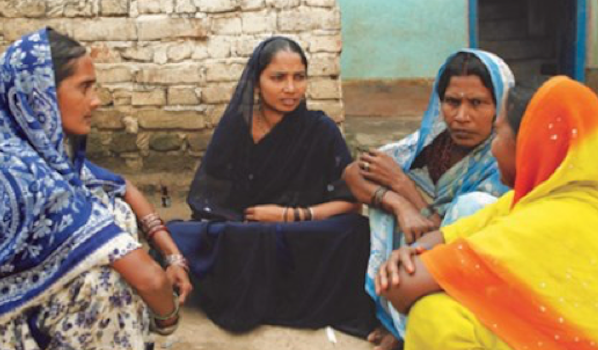
by Sushanta K Banerjee, Kathryn Andersen, Erin Pearson, Janardan Warvadekar, Danish U Khan, Sangeeta Batra
BMJ Open 2017;7:e012198. DOI: http://dx.doi.org/10.1136/bmjopen-2016-012198 Open Access
Unsafe abortion is still a significant public health problem in India, with complications of abortion accounting for 8-9% of maternal deaths. Every year an estimated 6.4 million abortions take place in India, and over half (56%) are estimated to be unsafe. Many women are not aware that abortion is legal, nor are they aware of facilities that are certified by the government to provide abortion services.
Behaviour change communication (BCC) interventions have shown promise in improving knowledge of contraceptive use, immunisation and HIV/AIDS. They include a wide range of interventions that fall into three broad categories: mass media, interpersonal communication, and community mobilisation. These three types of communication can improve indicators commonly used by public health programme implementers, including knowledge, attitudes, intentions and behaviours. However, these interventions for large populations are often expensive and complex and are only appropriate with sustainable resource support.
Ipas Development Foundation in coordination with the state governments of Bihar and Jharkhand piloted two intervention models in two selected districts each in Bihar and Jharkhand. The study compared a high-intensity model and a low-intensity model of communication and their relative effectiveness in terms of improving women’s knowledge and awareness of the legal aspects and sources of safe abortion services and experiences with regard to usage of abortion services; the study also examined the association between exposure to the intervention and levels of abortion knowledge.
The communication campaign centred on a fictional young woman called Kalyani, meaning auspicious. Using Kalyani as the protagonist, two different communication models were introduced to increase awareness and service usage among women in the districts. The high-intensity intervention consisted of communication activities including interpersonal communication through group meetings and interactive games, wall signs, street dramas and distribution of low-literacy reference materials. Interpersonal communication group meetings were carried out in different locations of the village with 8-10 married women aged 15-49 years. At the end of each group meeting, participants played interactive games to reinforce the key messages delivered in the meeting. Wall paintings and posters included the legality, availability, modern techniques of abortion and safety of first trimester abortion and were placed in central locations of the village and health facilities. A total of 877 villages received interventions through 851 wall paintings, 12,000 interpersonal communication meetings and 819 street dramas.
These interventions were successful in improving knowledge about the legal aspects of abortion and where to access safe abortion services. The high-intensity model was more effective in improving knowledge. In general, the more exposure to information, the more women who retained the information shared, although this differed with type of communication strategy. The research was not powered to detect changes in abortion care-seeking behaviour.



